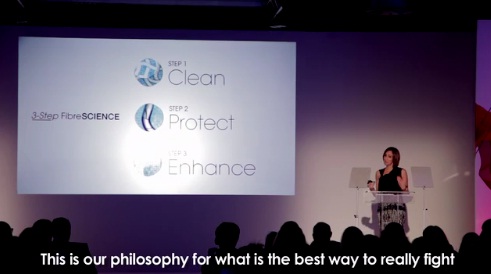
P&G Fabric Care – whose global brands include Ariel, Tide, Dash, Downy and Lenor – is applying cognitive science to understand why people fall out of love with their wardrobe. Researchers found that most of us only using 20 percent of our wardrobe, 80 percent of the time. In fact, a recent survey conducted on behalf of P&G, revealed that 84 percent of women would like to reinvigorate the clothes inside of their wardrobe.
P&G Fabric Care will be revealing how its 3-Step Fibre Science approach has influenced its new products at the P&G Future Fabrics event in Berlin on Thursday 13th November. Now in its second year, the event will focus on the theme of Fabric of the Senses – the desire to experience fabric and fashion in multi-sensory dimensions.
P&G’s latest research reveals that people are affected by multi-sensory influences even more than they realize, and at some point they stop wearing clothes because they lose the multi-sensorial properties that originally drew them in – their specific look, feel and handle. These cognitive – but for the most part unconscious -responses our brain makes to the sensorial properties of fabrics can mean that a garment is relegated to the back of the wardrobe and not worn again. Combining this cognitive knowledge of our multi-sensory brains with an unrivalled expertise in the science of the beauty and care of clothes, P&G Fibre Scientists have been exploring fabric care innovations to help maintain the desirable sensorial attributes of clothes, so we can wear and love them for longer.
The link between the senses and fashion choices isn’t new but what is, is the explosion of sensorial fabrics seen on catwalks and in mainstream fashion retailers. As sensorial fabrics become an even bigger part of consumers’ wardrobes, P&G has identified a need to respond; taking its 3-Step Fibre Science approach – to Clean, Protect and Enhance the clothes that people love –and applying it to benefit the multi-sensorial fabric properties that influence people’s relationship with their clothes.
“Fabrics can evoke a range of sensations and perceptions affecting our memories, mood and even self-esteem. Human perception not only plays a part in the clothing we choose to buy, but if we still select it from our wardrobe twelve months on, we may change how we feel towards the fabric due to multi-sensorial influences. It’s fascinating to be involved in P&G Fabric Care’s response to this challenge.” Dr. Lawrence Rosenblum, cognitive psychologist explains.
What new technology and trends in fabric will lead to a greater multi-sensorial experience? Make sure you stay up-to-date at Capital Lifestyle Magazine for an exclusive sneak peak from P&G’s global event in Berlin in the coming weeks.
